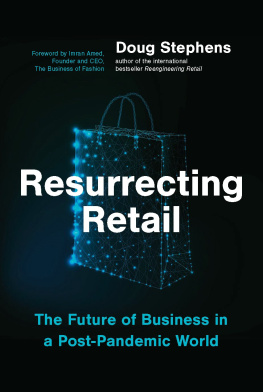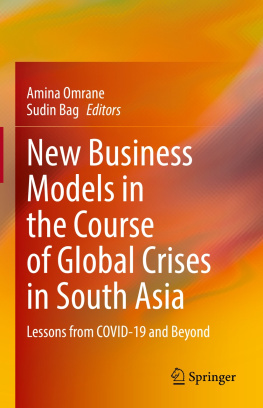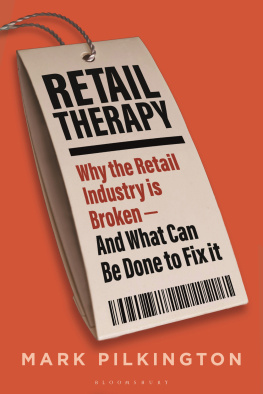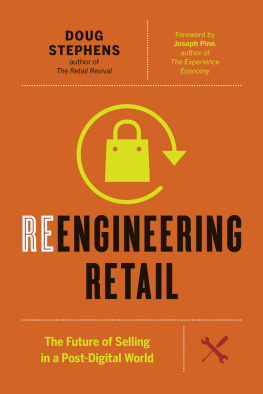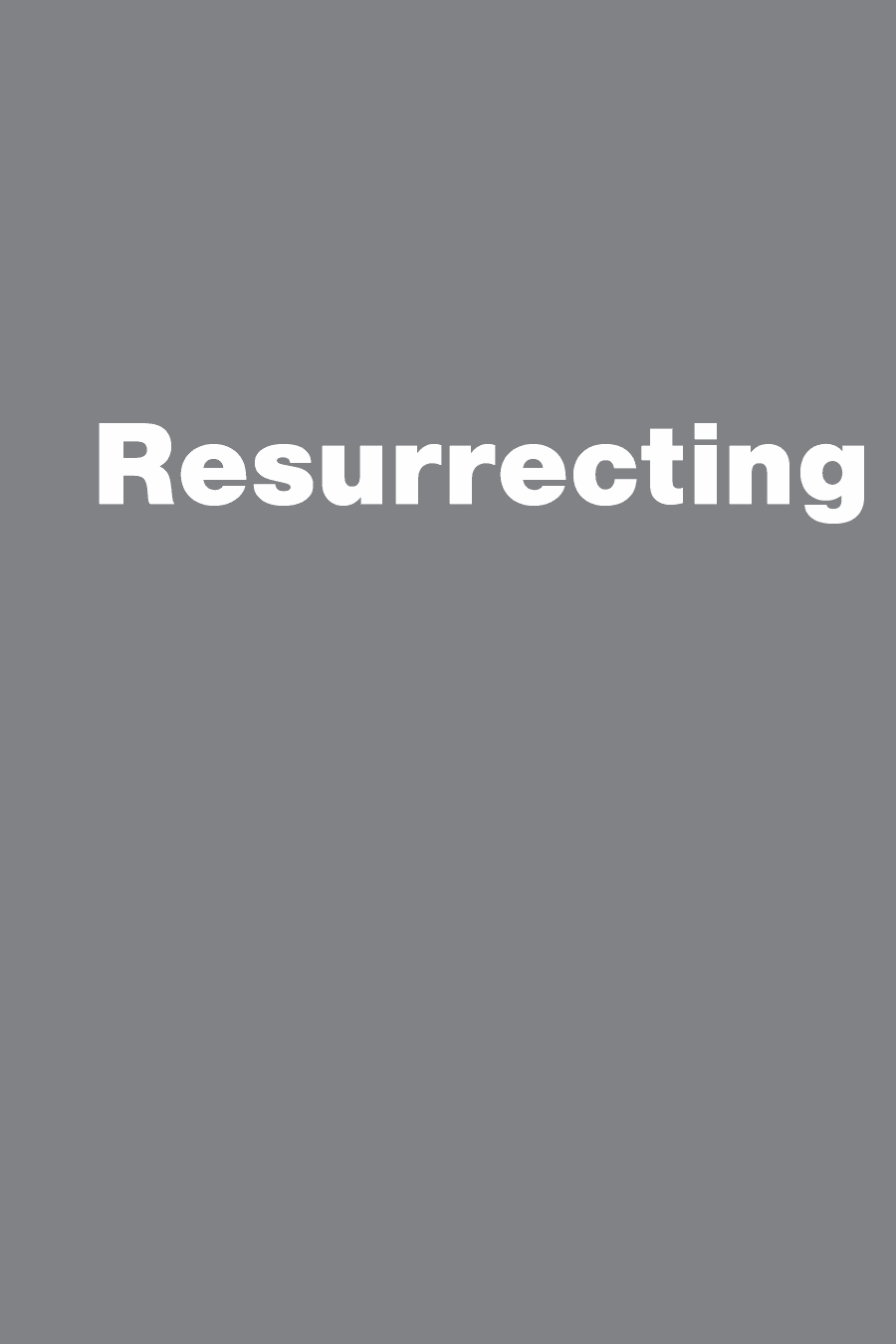For all those who rose
to confront the threat,
to seize the moment,
to embrace the future.
Copyright 2021 by Doug Stephens
Foreword copyright 2021 by Imran Amed
All rights are reserved and no part of this publication may be reproduced, stored in a retrieval system, or transmitted in any form or by any means, electronic, mechanic, photocopying, scanning, recording, or otherwise, except as authorized with written permission by the publisher. Excerpts from this publication may be reproduced under licence from Access Copyright.
Cataloguing data is available from Library and Archives Canada
ISBN 978-1-77327-143-9 (hbk.)
ISBN 978-1-77327-144-6 (ebook)
ISBN 978-1-77327-145-3 (pdf)
ISBN 978-1-77327-146-0 (audio)
Design by Ingrid Paulson
Author photograph by David Leyes
Editing by Tyee Bridge
Copy editing by Marnie Lamb
Proofreading by Renate Preuss
Indexing by Stephen Ullstrom
Front cover image by Inna Bigun/shutterstock.com
Efforts have been made to determine copyright holders and to obtain permission for the use of copyrighted material. The publisher apologizes for any errors or omissions and would be grateful if notified for future printings.
Distributed internationally by Publishers Group West
Ebook by BrightWing Media
Figure 1 Publishing Inc.
Vancouver BC Canada
www.figure1publishing.com
Foreword
G rowing up in the southern suburbs of Calgary, Canada, in the 1980s, I spent a lot of time at Southcentre Mall. When I wanted to hang out with my friends, we went to the mall. When my family wanted to have a quick bite and catch a movie, we went to the mall. And of course, when I wanted to go shopping, it was the best place to go, especially during August and December when anchor tenants Eatons and The Bay would conduct competing back-to-school and Boxing Day sales that were thronged with people.
My regular destinations were HMV , where I could go listen to the latest records and check out the Billboard charts to see how my favorite artists were doing on the Hot 100 chart, even if I couldnt afford to buy the music; the Gap, where I worked summers on the shop floor, selling jeans and t-shirts; and the movie theatre, where Tuesday nights were always packed because tickets were less than five bucks. Looking back now, I realize that going to the mall wasnt just about shopping. It was about everything. It was the center of our community, offering entertainment, inspiration, and escape all in one place.
Long before COVID -19 rocked the world around us and altered the lives we live every day, the slow, inexorable decline of the North American shopping mall had already begun. First came the big box stores, which made shopping feel like going to a formulaic emporium with an endless choice of generic products. Then came Amazon and online retailers, which made shopping from home efficient and convenient without all the frustration and hassle of shopping in-store. Now, the pandemic has turbocharged the shift to digital, as years of online sales growth happened in a matter of months, resulting in the permanent closure of thousands of underperforming retail stores around the world.
Indeed, there were times during 2020 when it seemed like the final death knell for physical stores had sounded. But as Doug Stephens vividly illustrates in his new book, Resurrecting Retail, the global pandemic and ensuing economic crisis is not simply accelerating a long-term trend, it is catalyzing a once-in-a-generation transformation in human behavior that will change everything: how we live, how we work, how we learn and of course, how and why we shop.
In his inimitably frank and straightforward way, Doug outlines ten key archetypes for retail executives and marketers to consider as they grapple with how to reimagine retail for a post-pandemic world. If Dougs new reality comes true, the last-standing shopping centers will become more like community hubs and town squares complete with residential developments, fitness studios, libraries, restaurants, and concept stores just like Southcentre Mall was for me. But the shopping center of the future will also embrace new technologies and mindsets about retail and shopping that will help build brand loyalty and awareness, no matter where the customer chooses to conduct the final transaction. Its no longer about sales per square foot and cost per click, but rather about experiences per square foot and sales per click.
Nobody knows for sure what the world will be like when this is all over, but one things for sure: nothing will ever be the same, underscoring that old adage that with every crisis comes an opportunity. Resurrecting Retail will help you figure out how to seize it.
Imran Amed
Founder and CEO of The Business of Fashion
London, November 2020
Introduction
Handshakes and Hugs
By the pricking of my thumbs, something wicked this way comes.
William Shakespeare
F rom above, its difficult at first to comprehend the sheer scale of what youre looking at. You see only an ocean of white and gray curtains, aluminum framing, and acoustic tile stretched out across the cavernous space. Together, the materials form row upon row of cubicles, spanning almost 2 million square feet. Below, there is a flurry of activity as supplies, furniture, and equipment are hurriedly shuttled to their final destinations on forklifts and pallet trucks.
We worked 24 hours a day, seven days a week with our vertical team to spec out the sites [and] award contracts, and then began work immediately after the contracts were awarded, said Michael Embrich, a spokesperson for the U.S. Army Corps of Engineers, in an article for the U.S. Department of Defense. In the spring of 2020, the Corps of Engineers helped New York City assemble this facility to provide beds for over two thousand people affected by the COVID -19 virus. adequate ventilation. While it may not have been luxurious relative to some modern medical facilities, the patients brought here would likely welcome their new surroundings.
What was perhaps most impressive is the speed with which the facility was completed. It was much quicker than we usually design, engineer and construct a project, Embrich said. In fact, the entire facility was outfitted in roughly two weeks a Herculean task by any measure.
Its challenging to conceive of a project of this scale being completed so quickly and equally hard to believe that less than three months earlier, the makeshift field hospital was a convention center, home to one of retails largest annual global pilgrimages: the National Retail Federations Big Show, held each January in New York City. I had been there in January, along with colleagues from all corners of the globe thirty-seven thousand of us gathered in its halls, atriums, and auditoriums to discuss the fate and future of the retail industry.
Amidst the countless collegial handshakes and hugs, shoulder-to- shoulder lineups, and close conversations held in noisy session halls, few of us could have imagined that only weeks later such basic human behaviors would be widely discouraged, even forbidden. Even fewer could have appreciated the degree to which 2020 would impact the retail industry and nearly every other livelihood on the planet, marking a milestone unlike any other in our personal or professional lives.
It would be hard to find a better symbol of the global transformatio n wrought by the pandemic. The massive Jacob K. Javits Convention Center the teeming hub of retail industry optimism and anticipa tion only three months before had now been transformed into a U.S. Army field hospital, ready to treat thousands of overflow patients in the worst global pandemic in more than one hundred years. None of the Big Shows attendees could have envisioned that the themes, concepts, and conversations being exchanged there would, in hindsight, seem so trivial relative to what was coming. Like reveling passengers on the

